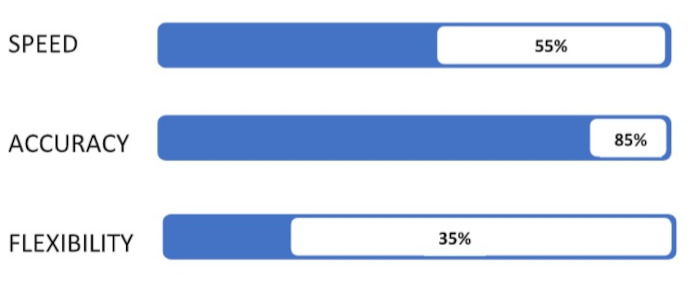The Evolution of Gasoline Blending: Part 2
Welcome back to Part 2 of the evolution of gasoline blending series. Just to recap, we established a framework in Part 1 regarding the types of refiners, layers of the blending ecosystem and a concept of stress testing. We also talked about quantifying each of the dimensions i.e., speed, accuracy, and flexibility of making blends with the help of data. As a reminder, our goal is to infuse as much profitability mindset into the blending ecosystem at the end of this exercise.
In this blog we will start with discussing the blenders priorities and the ecosystem they work in.
On a high level the blenders priorities are:
- Keep the blending operation running with no incidents
- Keep component levels healthy [x days of supply in case of an unplanned event]
- Meet specifications and contractual obligations
- Do all the above profitably
Let’s look at the ecosystem in which the blender must achieve the above objectives.
PEOPLE
- Refinery planners, unit schedulers and dock schedulers
- Refinery operations [execution team]
- Lab personnel
- Supply and trading: traders and schedulers
SYSTEMS
- Blending systems: offline and online systems for single and multiple blends
- Instrumentation: meters and analyzers
- Movements: pipes, pumps, headers, and tanks [flow rates, lineups, and displacements]
PROCESSES
- Organizational standards: min/max inventories, decision rights, best practices, workflow
- Industrial standards: measurements, custody transfer, quality measurement (laboratory)
- Data: Analysis, monitoring, KPI’s
On a daily, weekly, and monthly basis the blender interacts/uses each of the above on a very consistent basis. The goal being to tactically achieve maximum profit by effectively collaborating within the ecosystem.
Let’s think about how we can quantify the three dimensions that we talked about in Blog #1.
SPEED
- Blend rate: rate of making a blend. This may be sub-categorized by grade(s) and/or modes of shipment.
- Opportunity response: speed of response to spot cargo opportunity.
- Volume response: speed of response to demand changes.
ACCURACY
- Specification: RBOB / PBOB / CARBOB
- Shipment volume: Tolerance +/- contractual amount
- Healthy component level: For example, stretching Alkylate for the whole month
- NIR model prediction: Model set up and updates
- Lab repeatability and reproducibility
FLEXIBILITY
- Types and frequency of grades produced with comparison to commonly produced grades
- Loading rate flexibility
Quantifying the three dimensions requires data. Using past performance data, it is possible to quantify the three blending dimensions for the current operation.
Each dimension will be expressed as a percent (%) and a progress bar will identify as to where the refinery stands with respect to its blending capability. Below is an illustrative example of the possible outcome of such an exercise.

Once the quantification of the 3 dimensions is complete, the refinery now understands its current blending position and can begin choosing a direction it wants to pursue in terms of improvement. From this basis a refinery can remain with the same configuration or address improvement opportunities. The next step, after quantifying a blend position and deciding on immediate blend improvement opportunities, is to perform a “stress test” which we will discuss next.
Data was our friend when it came to quantifying the 3 dimensions. For the stress testing we need be more creative. Looking back at data might only gives us how did the ecosystem respond to stress in the past. To look ahead we will need to leverage processes and people.
One way of quantifying the stress test is, by introducing the concept of “what-if” scenarios through a series of questions with a certain weight percent (%) assigned to each one. This set of questions will be the building blocks of our stress test. All the people involved in the blending ecosystem will be provided a questionnaire for their response and the resultant response data be analyzed and visualized.
Some examples of “what-if” scenarios included in the stress test might be:
- Demand for a spot cargo
- Refinery next door has an unplanned outage
- Trading has a swap scenario and a good margin associated with paper/physical transaction.
From these scenarios, the desired outcome is to measure the response capability of the blending system to certain stresses. The following are some examples of areas of interest:
- How an LP planner and blender simultaneously look at profitability scenarios
- How operations align to a new schedule and their ability to execute that schedule
- What is the capability of finding alternate supplier/swaps for increased demand
- How well is the risk of executing the alternate plan assessed.
Now that we have developed a framework for quantifying the 3 dimensions for current blend performance and stress testing to understand areas of new opportunity, we will finish our journey in Blog #3. In our third blog we will focus on the KPI’s that will drive the blending ecosystems behavior and how we can align it with corporate goals and initiatives. These could range in focus areas from safety, margin improvement, sustainability and more.
At Becht, we provide expert consulting and plant services to oil refineries and chemical plants. Give us a call for a discussion about how we can help you in this evolving space of gasoline blending. Should you like to contact the author or anyone at Becht regarding your blending questions, please click below:
Read Part 3 of this Blog
available 12/8/2022



